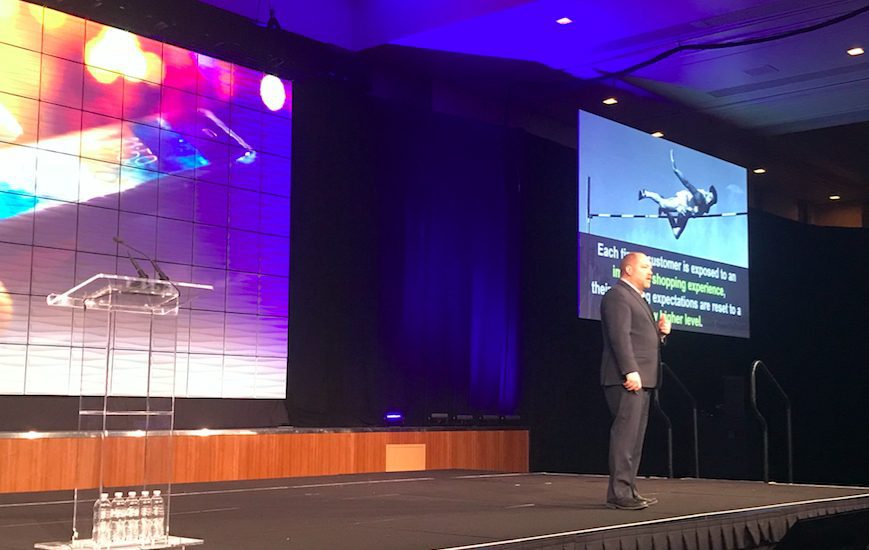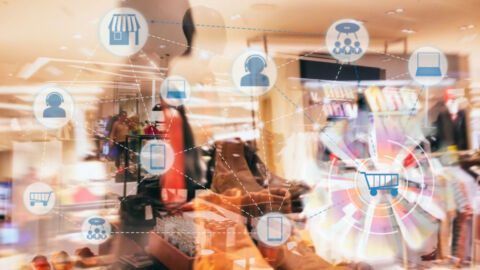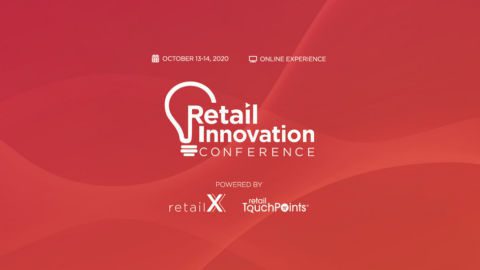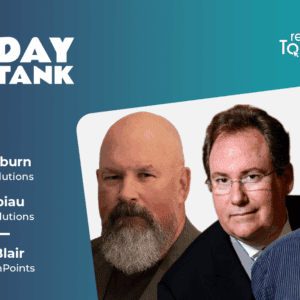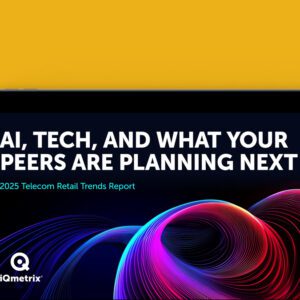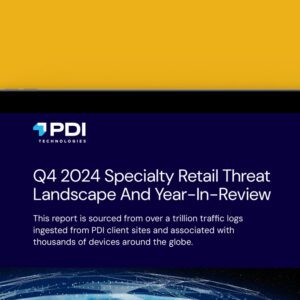On the second morning of Aptos Engage 2018, held April 16-19 in Las Vegas, Brendan Witcher, VP, Principal Analyst at Forrester, took the stage to deliver his keynote and kicked off the presentation with two scary statements for retailers:
- You’re not behind your competitors; you’re behind your customers — behind their expectations.
- Your products don’t matter anymore.
Those are shocking statements to make, but Witcher made a great point. Experiences such as Netflix and Uber have reset consumer expectations to new levels. “We are in the state of hyper-adoption and hyper-abandonment,” he said. “Retailers are missing the mark on getting customer expectations right.
“Our expectations are always on the rise,” he continued. “Each time a customer is exposed to an improved shopping experience, their shopping expectations are reset to a new, higher level.”
Consumers have come to expect digitized, individualized and seamless experiences. To address this, Witcher emphasized the importance of omnichannel retailing, because we are all omnichannel shoppers.
“We have expectations across the entire journey,” said Witcher. “Expectations that are being set by an omnichannel journey that consumers go on with your competitors. Worry about what your consumers are doing with your competitors and find a way to compete with them.”
Witcher continued to break down the four key areas that are truly important in order to separate and strategize omnichannel retailing. However, he emphasized that each of these pillars have unique stakeholders and unique strategies, and “should be on about a three- to five-year timeline to implement.
“Good strategy isn’t about what you choose to do; it’s about what you choose to not do yet,” Witcher added. “That is good strategy. Sometimes you have to push stuff out.”
The four pillars include:
1. View Of The Customer
This is the foundational pillar of doing omnichannel, according to Witcher. “You cannot create an omnichannel experience for a customer you can’t identify across channels.”
Witcher said you have to be a data-led, not a data-driven retailer: “Data-led means you have no preconceived notions about a customer. You let the data tell you what to do. Customers want you to deliver these experiences for them.”
It’s no longer about segmenting customers based on general characteristics such as gender or age. Knowing a consumer’s attitudes and sentiments towards things, favorite day of the week they like to shop, the associate they like to deal with, the price points that they buy at, etc., will help retailers better target their consumers and deliver a great experience.
“We don’t need personas, we need profiles about our customers,” said Witcher. “Deliver value for your consumer in order to get this information.”
2. Omnichannel Engagement
Witcher stated that while fulfillment gets all the attention, engagement is the one that offers the most opportunity to create different experiences for customers.
“Omnichannel engagement touches the entire customer journey,” said Witcher. “How do you create relevancy throughout the entire journey?”
Witcher pointed to Nike, which puts their customers at the center of everything they do. They give them easy access to Nike products and experiences in distinctive retail environments — online and in store.
“Turn your stores from places to shop to places to engage,” said Witcher.
In another example, Witcher said Neiman Marcus provides multiple points of omnichannel exchange within one single app. “With ‘Snap, Find, Shop,’ I can take a picture of something in a physical environment, and they go find it in the physical store,” said Witcher. “That’s using digital to bridge the physical.”
3. Omnichannel Fulfillment
Witcher said that 14% of U.S. shoppers use in-store pickup when it’s available. When consumers have both in front of them, a higher percentage will use BOPIS over e-Commerce, according to Witcher.
“This is the new customer journey,” said Witcher. “BOPIS is as important as e-Commerce today and it will just become larger and larger as more companies roll it out.”
4. Product And Price
“This is about customers seeing consistent content and pricing/promotions across channels,” said Witcher. “But the truth of the matter is, most retailers are not doing cross-channel pricing. That’s a reality because they are making too much money on zone pricing.”
Witcher said that retailers must have a pricing policy “because customers want to trust us, and if you break that trust, they will leave you.”



